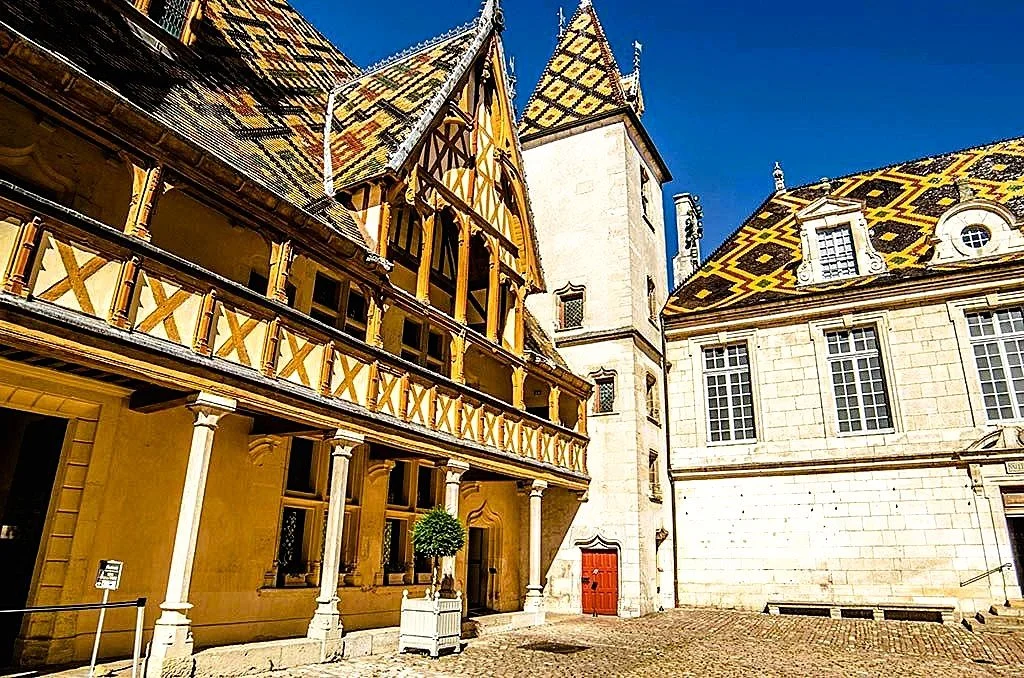The world class vineyards of Burgundy, France
Scents of the Soil, Flavours of Heritage
Vineyards of Burgundy.
“In Burgundy, when we speak of climat, we do not raise our eyes to the sky, but lower them to the ground,” observed the celebrated writer Bernard Pivot, reminding the French that the term derives from the Greek klima: a precisely delimited plot of vine-planted land. Adopted by the Burgundians in the sixteenth century, climat is used exclusively in this region; elsewhere one hears clos or parcelles.
There are only 1,248 such clos in Burgundy. They resemble walled gardens, and their minuteness explains the extreme scarcity of the wines they produce. Waiting lists for their acquisition stretch from China to the United States, from Brazil to England. Some fetch astonishing prices, prized for their singularity like a Rolls-Royce.
Clos de Vougeot, Burgundy.
During a memorable stay in Burgundy with friends, we tasted these storied wines at the Clos de Vougeot, accompanied by a refined gastronomic menu, while a sommelier elucidated the virtues of each glass. As we listened, our thoughts turned to the Cistercian monks in whose former domain we were lodged. The Abbey of Cîteaux lies behind the Château de Gilly, where we stayed, built in the Renaissance to receive distinguished visitors.
The monks were Burgundy’s first vignerons. In 1109 they were granted the land of Vougeot, establishing cellars at Clos Prieur, where we later dined.
Clos Prieur, Château de Gilly, Burgundy.
In time, they traded their wines to Dijon in the north, Beaune in the south, and to local landlords and innkeepers. In the fifteenth century Philip the Good, Duke of Burgundy, introduced Pinot Noir, the grape that would work a quiet miracle. To this day, Burgundy’s great red wines are made exclusively from Pinot Noir.
After the French Revolution, in 1791, the monks were expelled and the Clos de Vougeot confiscated and divided among winegrowers, whose practices and traditions have since been handed down through generations.
Salle Renaissance, Château du Clos de Vougeot.
Today the estate comprises some one hundred climats, demarcated by stone walls. Set amid a sea of vines stands the solitary Renaissance château, home to its monumental medieval presses; we were delighted to tour them before enjoying lunch at the château.
Another remarkable chapter begins in 1934, when two enterprising young men from nearby Nuits-Saint-Georges gathered friends in a cellar during the depths of economic crisis. With sales collapsed and cellars brimming, they resolved to replace lamentation with celebration.
Chevaliers de Tastevin, Clos de Vougeot, Burgundy.
Thus was born the Confrérie des Chevaliers du Tastevin, a convivial brotherhood dedicated to reviving Burgundy’s wines, cuisine, folklore and songs. Today it counts some 12,000 members worldwide, with Commanderies on all five continents. In 1944, the Confrérie purchased the Château du Clos de Vougeot, restoring it as their headquarters.
North and south of the Clos de Vougeot, within a few kilometres, lie other legendary climats: Gevrey-Chambertin, Chambolle-Musigny, Vosne-Romanée and Nuits-Saint-Georges. These embrace charming medieval villages with pointed belfries and produce Burgundy’s most celebrated red Grands Crus. Across the whole region, red and white together, there are only thirty-three Grands Crus: so few, and so coveted.
Pinot Noir grape variety, Burgundy.
Further south lies the Côte de Beaune, where great dry white wines are born from Chardonnay alone. Aloxe-Corton and, across the slope, Corton-Charlemagne display a patchwork of treasured, lilliputian climats; a single hectare here recently sold for twenty million euros.
Beaune itself, the historic capital of Burgundy wines, enchants with its streets and boutiques.
La Cour des Hospices (Hotel-Dieu) in Beaune, Burgundy.
Its Hôtel-Dieu, founded in 1443 by Chancellor Nicolas Rolin, advisor to the Ducs of Burgundy, astonishes with its polychrome tiled roofs and recalls a time when patients drank wine rather than water. Beneath the town runs a labyrinth of cellars extending for kilometres.
South of Beaune, Chardonnay again reigns in the celebrated triangle framed by Meursault, Santenay and Chagny, with Montrachet at its heart: the pinnacle of white Burgundy, said by Alexandre Dumas to deserve being drunk on one’s knees, hat in hand.
Picnic at the Château de la Creé, Burgundy.
To traverse the Bourgogne vineyards is to follow the Route des Grands Crus, opened in 1937: a sixty-kilometre ribbon winding from Dijon to Santenay, now entirely UNESCO-listed. We followed it, through a mosaic of unique clos, each shaped by relief, exposure and geology—a millennium-long dialogue between man and nature.
Route des Grands Crus, Burgundy.
Little wonder that Burgundy, this single vast vineyard, yields some of the greatest wines in the world.
Travel with my Books in English









